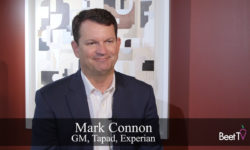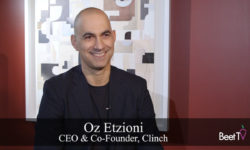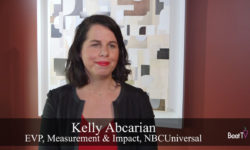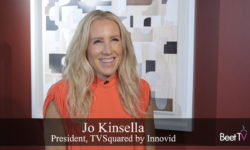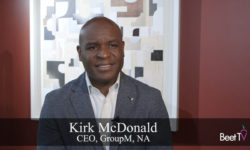Radio throughout its history has provided a way for brands to reach a mass audience efficiently in their awareness campaigns. With the growth of streaming audio and on-demand programming like podcasts, marketers can engage listeners with ads that drive transactions. In that way, audio formats now reach all parts of the consumer purchase funnel.
“Ad-supported audio is a booming business,” Tim Murphy, executive vice president of corporate business development at radio and podcasting company Audacy, said in this Beet.TV interview at the Luma Partners Digital Media Summit.
Audacy, which last year changed its name from Entercom Communications in a corporate rebranding, reaches 200 million U.S. consumers through radio broadcasts and more than 60 million people through audio streams.
“That lower-funnel capability that digital brings allows us to serve advertisers across the board, both upper funnel down the lower funnel,” Murphy said. “We like to think that audio has now become kind of full service in the advertising industry.”
Customized Strategies
Advertisers have a variety of ways to measure the effectiveness of their radio and streaming campaigns, depending on the strategy.
“For direct-to-consumer brands who are really transactional-based, digital brings that kind of that direct connection to a click and an outcome or from ecommerce,” Murphy said, “but if you’re a brand that really needs more awareness and favorability from an upper-funnel perspective, they measure on reach, frequency and longer-term metrics around how people feel about their brand.”
Audacy has ways to gather first-party data about listeners, including people who participate in special promotions like on-air contests or connect with its digital properties. The data can help to reach consumers based on their spending habits.
“We now know a tremendous amount about tens of millions of our listeners,” Murphy said. “That data has allowed us to inform our full audience buying. We now know a lot more about specific segments of advertisers, not just demos like ZIP, age and gender.”








